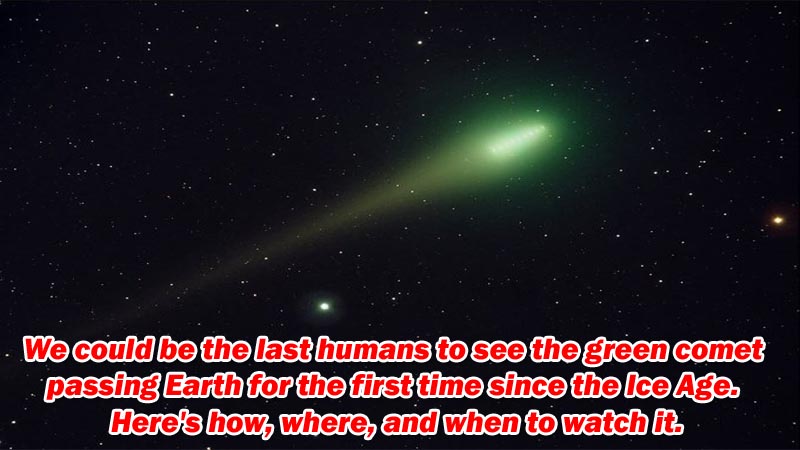On February 1, 2023, a green comet named C/2022 E3 (ZTF) will return to Earth after 50,000 years. Even so, the inhabitants of this planet can already witness it late at night and early morning before February 1st.
Observers have been following its path for weeks and got an excellent view of January 12, 2023, when the green comet is approaching the sun.
A Rare Green Comet Can Be Seen in The Sky, And It May Be Our Last Chance
Astronomers first detected the presence of this celestial body in March 2022. The green comet is moving across the solar system about 399 million miles or 642 million kilometers from the sun or just inside the orbit of Jupiter.
Even though its appearance looks dim, according to Space.dom as quoted from Live Science, observers were able to immediately detect the presence of a different tail. This meant that what they were looking at was a comet, not an asteroid.
On January 12, 2023, the comet will be 482 million kilometers closer to Earth. This makes it visible in the night sky near the northern constellation Corona Borealis.
From there, the green comet continues to move west across the sky. Experts calculate that this comet will be visible to the naked eye in the third week of January.
On the night of January 26-27, 2023, a green comet can be seen just east of the Big Dipper. Furthermore, on February 1 as it approaches Earth, the comet will appear near the constellation Camelopardalis, not far from the Big Dipper.
Next, on 5-6 February 2023, the green comet will cross the night sky to the west of the star Capella and enter the constellation Auriga. From there, it descends towards Taurus and gets dimmer as it moves away from Earth.
Green Comet Route
Astronomers aren't sure how far this green comet will move away from Earth. However, they predict that one of those space objects will leave our solar system completely.
Furthermore, humans might never see him again. The reason is, in the calculations of experts, this comet moves in a parabolic orbit.
It is indeed possible that the gravity of some unknown space object could slightly change the shape of its orbit and return it to a path through the solar system. Even so, even if it happens it will still be millions of years before the green comet meets Earth again.
How to See the Green Comet
When the green comet passes Earth on February 1, it will be as bright as the dimmest star in the night sky. However, it would not look like a sharp and pointed star, but instead, appear blurry but incandescent and spread its light over an area the size of a full moon.
If you live in a city or area polluted by light, then the green comet will be difficult to see. Joe Rao, columnist for Space.com and visiting lecturer at the Hayden Planetarium suggests that people should look at this comet at its darkest point.
Rao suggests that our eyes adjust to the darkness for 20 to 30 minutes and then look up at the North Star, Polaris, which is located at the tip of the Big Dipper.
With the naked eye, people can see the comet's light around that area of the sky. According to Space.com, it could be easier to see the green comet this way than using binoculars or a telescope.
Why is it Green?
Actually, this comet is not green. Its head appears to glow green due to a rare chemical reaction.
This glow is probably due to diatomic carbon (C2). When the sun's ultraviolet rays break down the molecule, it emits a greenish glow that can last for several days. This is according to a 2021 study in the journal Proceedings of the National Academy of Sciences.
The green light disappeared before the comet's tail, the coma, which was made of gas, This gas is the result of solar radiation and often glows blue due to ultraviolet light.





0 Comments
We Love and Respect you a lot so please do not enter any spam link in the comment box.